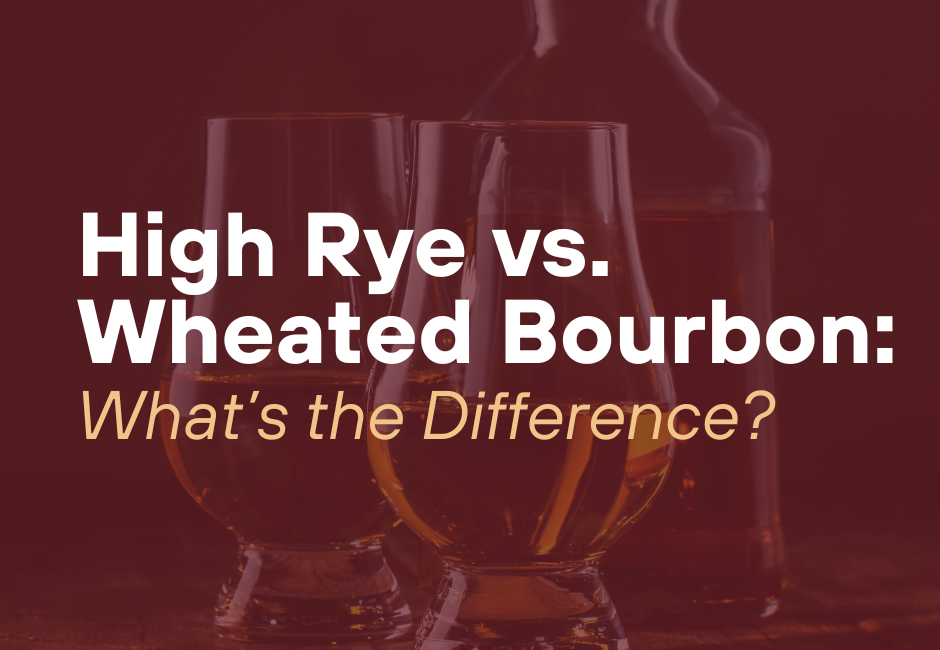It’s a classic bourbon debate: backbone or softness? Every bourbon lover eventually discovers their type. Some reach for that structured, lively pour that commands attention in a cocktail. Others fall for bourbon’s softer side, where vanilla, honey, and corn sweetness take center stage.
The secret to which side you favor? It’s partly in the mash bill. The grain recipe that shapes your bourbon’s personality – though barrel, proof, yeast, and grain quality all play a major role too.
Mash Bill 101: Bourbon’s Flavor Blueprint
Every bourbon starts with a base of at least 51% corn, providing sweetness and body. The “flavoring grain,” rye or wheat, is where things get interesting.
- High Rye Bourbons: Typically have ~20% or more rye, with corn under 70%. Rye adds structure, herbal tones, and subtle spice. It doesn’t always mean “hot” – instead, it gives the whiskey lift, texture, and complexity.
- Wheated Bourbons: With wheat in the secondary slot (often 15–20%), these allow the corn’s flavor to shine more clearly. Expect gentle sweetness, vanilla, and honey – but not necessarily softness. Proof and barrel still call the shots.
The takeaway? Mash bill sets the stage, but everything from fermentation to aging tells the rest of the story.
High Rye Bourbons: Structure, Lift, and Complexity
When rye steps in as the flavoring grain, you get nuance (think pepper, herbal brightness, and baking spice woven through oak and sweetness). High rye bourbons are lively, engaging, and built for both sipping and mixing.
Flavor cues you might notice:
- Black pepper, nutmeg, mint, and dry oak
- Lifted structure and aromatic spice
- Excellent in stirred cocktails like a Manhattan or Boulevardier
Wheated Bourbons: Letting Corn Take the Lead
When wheat replaces rye, bourbon often becomes rounder and more focused on its corn-driven notes. Expect flavors of vanilla, honey, soft spice, and a gentle structure that’s proof-dependent rather than grain-driven.
Flavor cues you might notice:
- Vanilla, honey, toasted grain, and light caramel
- A soft texture, sometimes floral or nutty
- Perfect neat or with a small cube to open up the sweetness
Try This: Side-by-Side Bourbon Tasting
Pour 1 oz. of a high rye bourbon and 1 oz. of a wheated bourbon. Sip the high rye first, focusing on structure, brightness, and spice. Then move to the wheated – notice how the sweetness and texture shift.
To take it a step further:
- Add a drop of water to each and note what aromas emerge.
- Make two identical Old Fashioneds, one with each bourbon, and compare how the base spirit shapes the cocktail.
- There’s no “winner” here, just delicious education.
The Final Word: Bourbon Is Bigger Than Its Mash Bill
At the end of the day, mash bill is just one brushstroke in bourbon’s masterpiece. A high rye doesn’t always mean spice, and a wheated bourbon isn’t always soft. What matters most is how the grain, barrel, proof, and time come together in your glass. So this fall, grab two bottles, a friend, a few tasting glasses and let your palate decide which story you want to sip next.

